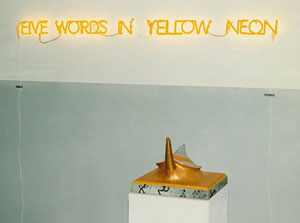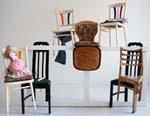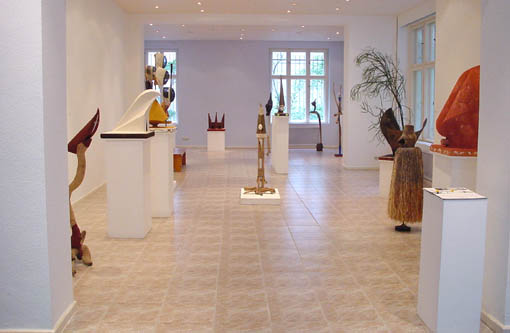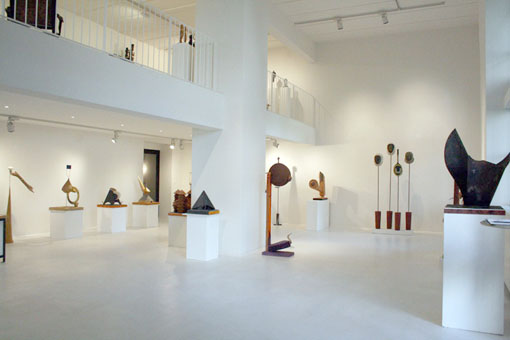
| |
 |
La Femme Milliardaire
together with
Five Words in Yellow Neon from Joseph Kosuth at:
Around & Around 1995, Douala, Cameroon. Espace Doual'Art. |
| |
 |
|
|
|
|
| |
la maison reliquaire |
Le gris-gris |
Mille et une nuits |
Tan-Tin |
maison du diable |
| |
 |
|
|
|
|
| |
Docteur Schweitzer |
La voie lactée |
tourne pas le dos |
Sushi-sashimi |
La case camouflée |
| |
 |
|
|
|
|
|
Secrets de la terre |
Casa Bianca |
Cui-Cui |
Petite femme |
Abou...de souffle |
| |
 |
|
|
|
|
|
Château d'eau |
Mon roi soleil |
Pique nique |
Femme éphémère |
Baisers volés |
| |
|
|
|
|
|
|
Petit Jean |
Blanche neige |
|
moi |
Tout Bonheur |
| |
 |
|
|
|
|
| |
Biâi |
la citadelle du désert |
Par oú je rentre |
La princesse |
L'egyptien |
| |
 |
|
|
|
|
| |
Ouverture |
La Pulpeuse |
Bilbao |
Le macho |
Le trappeur |
| |
 |
|
|
|
|
| |
L'aigle royal |
Le pére missionaire |
L'infidèle |
Quatre danseuses |
Merci Fanta |

|
 |
|
Les trois moustiquaires
4 Totems
|
|
| Le mouchard |
Le timide |
|
|

|
|
|

|
|
| |
|
Merci à ...
Installation Pohl-Position |
|
| |
1996 in Stuttgart-Bad Cannstatt mit der ersten Einzelausstellung - Sculptures
mémoires. |
| |
 |
| |
 |
Text: 2011 |
For 17 years now, the gallery has been working closely with Paris-based artist Aboudramane. After showing his work in many group exhibitions, we are now pleased to present his third solo show, which bears several markings of a full-blown retrospective.
Aboudramane’s career as an professional artist began in 1990 with a series of architectural maquettes in whose high-quality craftsmanship could be seen the traces of the artist’s carpentry training. In these and later pieces, Aboudramane blends fragments of local West African architecture with western styles and endows the mixture with highly personalized content. Formally, he plays with double meanings, includes puns in his titles and, using appliqué objects from a traditional West African context, evokes the world of healers.
These juxtapositions made Aboudramane a highly sought-after artist when it came to curating the content of architecture and secured him a show at New York’s Museum of African Art in the early 1990s. Even more integral to his growing recognition was the way in which the content of his works fit so nicely into the discourse on Africa’s triple heritage, which he expanded like no other visual artist.
Twenty years ago, this discourse about how Africa would develop and how the continent would overcome the difficult balancing act between Islam, Christianity and animism – as the old sub-Saharan traditions were then called – was very current. Aboudramane’s work explored those questions subtly, bitingly and humorously.
Influenced by his family heritage, the master combined forms and icons from his African background with those from his European present. Aboudramane’s family originally came from Muslim Mali; the artist himself was raised in Christian-dominated Abidjan; and his thinking was heavily influenced by his grandfather, a traditional healer. |
| |
Aboudramane was one of the few artists present in Germany during the first surge of interest in African artists in 1995, and he was included in virtually every publication released at the time. As one of the first African artists to show at an international fair, he was represented at Art Cologne by Galerie Dany Keller. He quickly gained fame in Belgium, the Netherlands, Spain, France and the United States, and his works were sold to important collections.
Like many artists from African countries, he gained his fame and success in Europe and the United States, not Africa. All the more gratifying for Aboudramane, then, to be featured in the 1995 Around and Around exhibition curated by Achim Kubinski and Peter Herrmann in cooperation with DoualArt and thereby have his work shown in Cameroon, at one of four stations spread across. Today, it’s hard to imagine that he was one of the African artists – together with Chéri Samba and Sokari Douglas Camp – whose well-known name pulled completely unknown talents like Pascale Marthine Tayou and Owusu-Ankomah into the limelight they currently occupy. |
| |
In the 1990s, the largest exhibition in Germany featuring artists from Africa was the 7th Triennial of Small Sculptures Europa-Afrika in Stuttgart; Aboudramane was one of 40 African artists selected to show in the exhibition. Almost all the artists included – 25 of whom were chosen on Peter Herrmann’s suggestion – now have an international presence.
Twelve museums and ten galleries came together around the topic of non-European art and set an important benchmark with their Multiple Echo concept Vielfaches Echo. Along with an impressive number of museum exhibitions, Aboudramane was also included in Galerie Ochs Berlin/Beijing’s Rest of the World Der Rest der Welt exhibition alongside a world-class selection of artists.
The current exhibition at Galerie Herrmann will feature architectural sculptures and steles. The surfaces will be especially interesting to those who notice and love sophisticated details, adorned as they are with everything the city and nature has to offer: eggs, bones, shells, grass, horns, soil. Tennis racquets, beads and fencing masks. There’s no material Aboudramane won’t use – leather, clay, acrylic, feathers, metal sheets, rubber, textiles, glass and fur. Materials and meanings open up layer by layer. The depth is nearly impenetrable.
Peter Herrmann. July 2011
Translation: Jenna Krumminga |

|